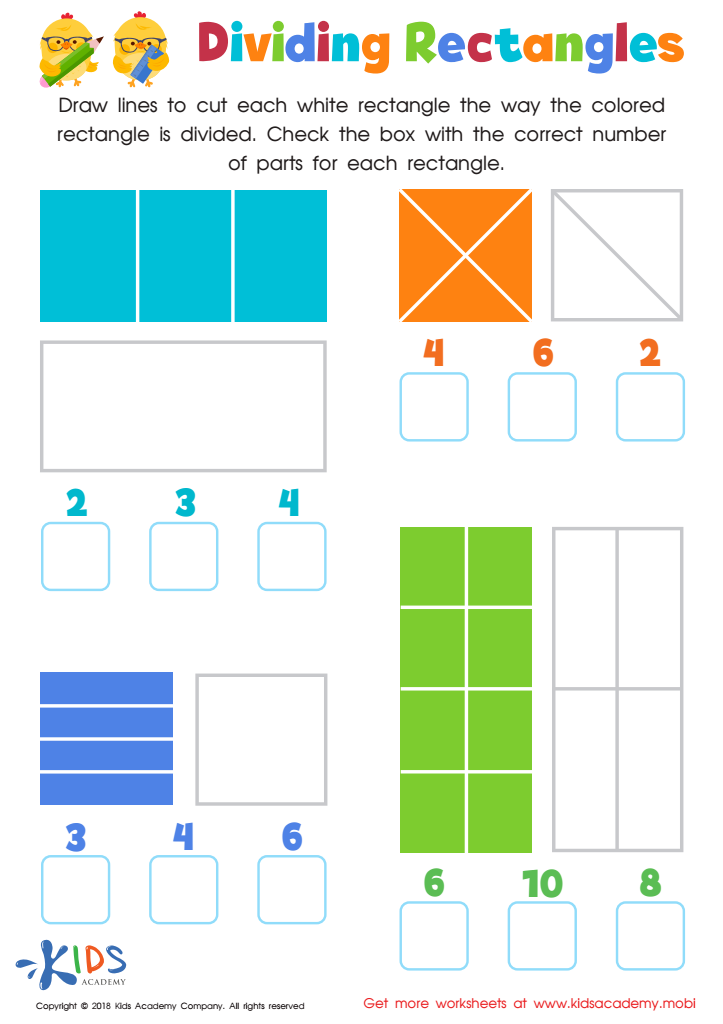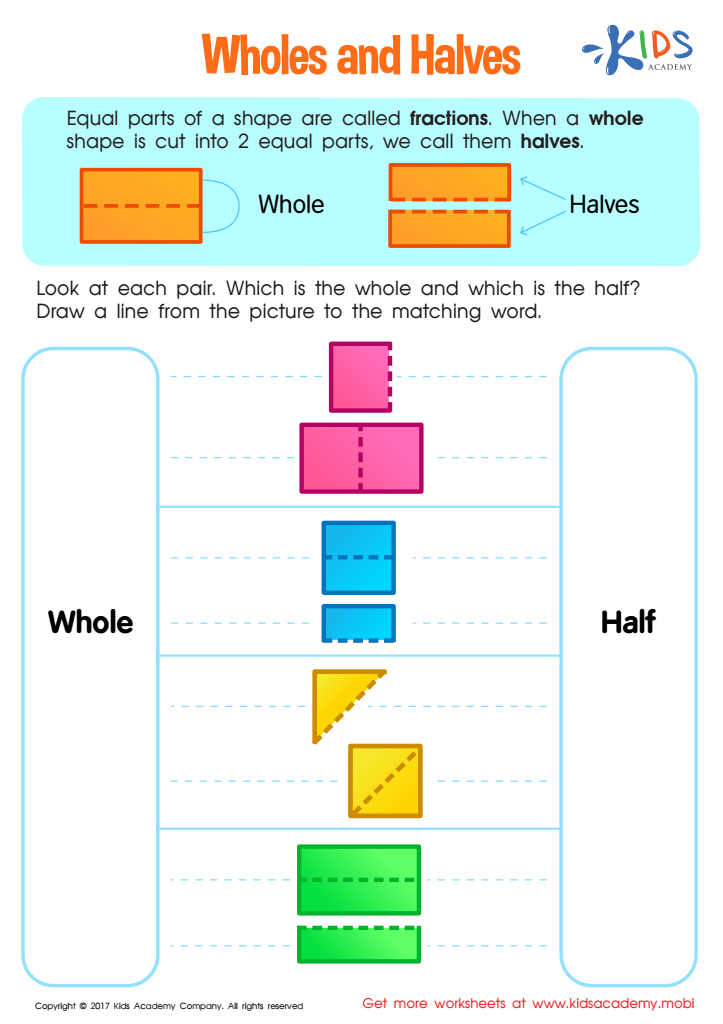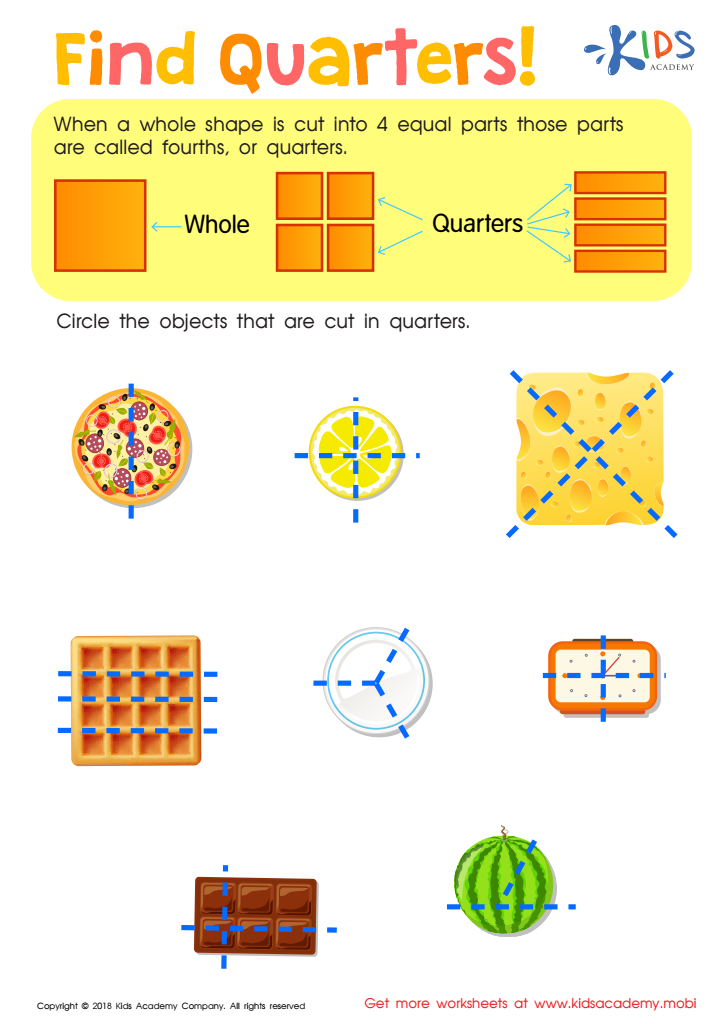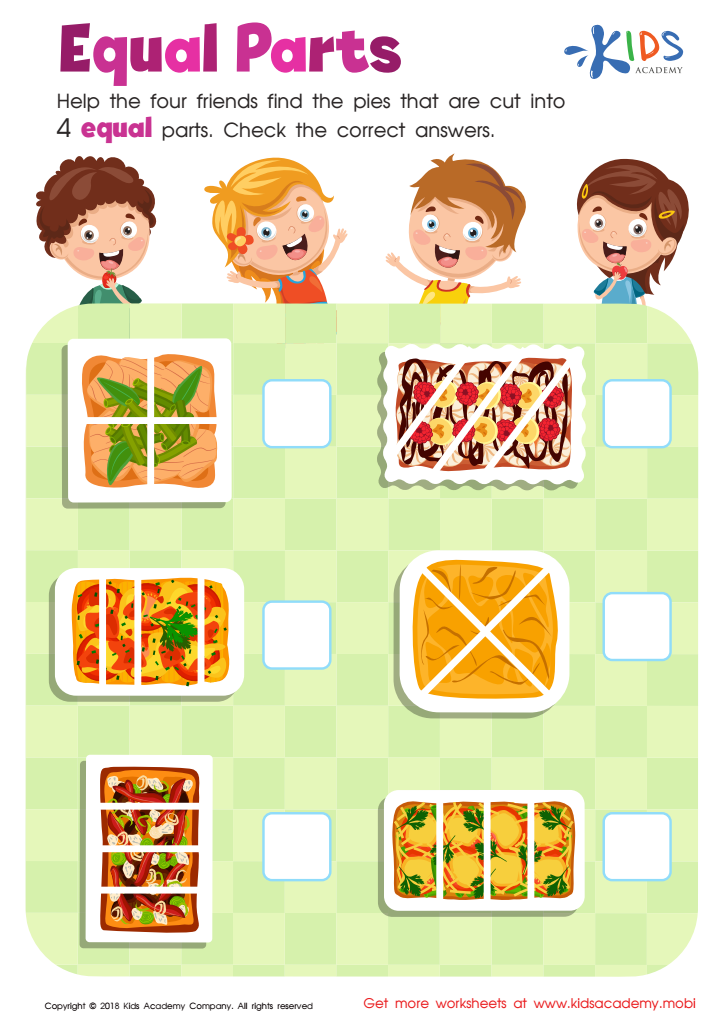Understanding fractions Normal Geometry Worksheets for Ages 6-7
4 filtered results
-
From - To
Explore our Understanding Fractions Normal Geometry Worksheets designed specifically for children aged 6-7! These engaging materials provide a fun and interactive way for young learners to grasp the fundamentals of fractions through colorful visuals and hands-on exercises. Perfect for early math education, these worksheets promote critical thinking skills while helping students identify and understand fractions in everyday contexts. Featuring a variety of challenges, children can practice fraction concepts through compelling activities that foster comprehension and retention. Ignite your child’s love for math and lay a solid foundation with our expertly crafted worksheets that make learning fractions exciting and effective!


Dividing Rectangles Worksheet


Wholes and Halves Worksheet


Find Quarters Worksheet


Equal Parts: Food Worksheet
Understanding fractions and basic geometry is essential for children ages 6-7, and both parents and teachers should prioritize these concepts for several reasons. Firstly, these topics lay the groundwork for critical mathematical skills that children will encounter later in their education. By grasping fractions, students learn to divide whole objects or quantities into smaller parts, a concept that is pivotal in everyday life, such as sharing food or measuring ingredients.
Moreover, engaging with normal geometry introduces children to shapes, spatial awareness, and the fundamentals of measurement. At this age, children are naturally curious about their environment, and geometry offers a concrete way to explore and understand the world around them.
Additionally, mastering these concepts helps build problem-solving skills, logical reasoning, and the ability to make connections between different mathematical ideas. As students become more proficient in fractions and geometry, they gain confidence in their mathematical abilities, setting a positive trajectory for future learning.
Ultimately, by focusing on these key areas, parents and teachers can support holistic cognitive development, foster a love for mathematics, and equip children with essential tools for success in both academic and real-life scenarios.
 Assign to My Students
Assign to My Students





























